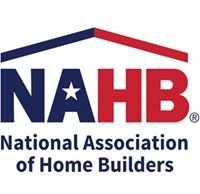WASHINGTON, D.C. – June 8, 2012 – (RealEstateRama) — Responding to concerns from the National Association of Home Builders (NAHB) and affiliated trade groups, Reps. John Sullivan (R-Okla.) Tim Murphy (R-Pa.) and a bipartisan list of original co-sponsors today introduced legislation to make much-needed improvements to the Environmental Protection Agency’s Lead: Repair, Renovation and Painting (LRRP) rule.
H.R. 5911, the Lead Exposure Reduction Amendments Act of 2012, is similar to legislation (S. 2148) unveiled earlier this year in the Senate by Sen. James Inhofe (R-Okla.) and five other cosponsors that would help home owners and remodelers to better comply with the costly work practices and record keeping requirements of the rule without compromising safety standards.
“We commend Reps. Sullivan and Murphy for championing this bill that will not only make the EPA’s lead paint rule more workable, but continue to protect pregnant women and small children,” said 2012 NAHB Remodelers Chairman George “Geep” Moore Jr., GMB, CAPS, GMR, a remodeler from Elm Grove, La. “This legislation will provide families greater flexibility to decide on their own remodeling activities and give them the peace of mind of knowing sound safeguards remain in place to protect against lead hazards.”
Additional co-sponsors include Reps. Leonard Boswell (D-Iowa), Aaron Schock (R-Ill.), Billy Long (R-Mo.), Kristi Noem (R-S.D.), Frank Lucas (R-Okla.), Dan Boren (D-Okla.), Tom Cole (R-Okla.) and James Lankford (R-Okla.)
The LRRP rule, which took effect on April 22, 2010, requires that remodelers and contractors working in homes built before 1978 be trained and certified by the EPA on lead-safe work practices before they can legally work in those homes.
Three months later, EPA removed the “opt-out” provision in the LRRP that allowed remodelers working in a home built prior to 1978 to forego more expensive work practices according to the owner’s wish if no children under the age of six or pregnant women resided there.
By removing the opt-out provision, EPA more than doubled the number of homes subject to the LRRP. The agency has estimated this will add more than $336 million per year in compliance costs to the remodeling community, and more importantly, without making young children any safer.
Further, EPA has failed to approve a test kit that meets the “false positive” and “false negative” criteria stated in the regulation.
By failing to perform a study of lead exposure rates from work on commercial and public buildings, the agency has also exceeded its congressional mandate by starting the process of extending the LRRP to those structures through an Advanced Notice of Proposed Rulemaking.
Both the House and Senate bills would address these concerns and offer other reforms for EPA enforcement of the lead paint rule. Specifically, the legislation would:
• Reinstate the opt-out provision to allow home owners without small children or pregnant women residing in them – not the government — to decide whether to require LRRP compliance.
• Suspend the LRRP if EPA does not approve a commercially available test kit that meets the regulation’s requirements.
• Allow remodelers to reduce fines if they correct paperwork errors found during an inspection.
• Eliminate the “hands on” recertification training requirements that force some remodelers to travel long distances to training facilities to receive proper certification.
• Prohibit EPA from expanding the LRRP to commercial and public buildings until at least one year after the agency conducts a study demonstrating the need for such an action.
• Clarify the definition of “abatement” to specifically exclude remodeling and renovation activities.
• Provide an exemption to the regulation for emergency renovations.
NAHB is urging its members to contact their representatives and senators and urge them to cosponsor the respective lead paint bills pending in the House and Senate.
For additional information about lead paint rule enforcement and compliance, visit www.nahb.org/leadpaint.







